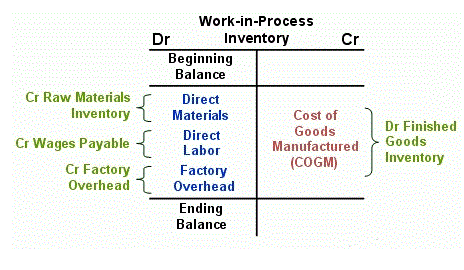
In accounting, we may issue a bond at a discount or at a premium which results in the carrying value of the bonds payable recorded on the balance sheet being lower or higher than the face value of the bond. It pays periodic interest payments i.e. coupon payments based on the stated interest rate. If the market interest rate is lower than the coupon rate, the bond must trade at a price higher than its par value. It is because the bond is overcompensating the bond-holder in terms of interest payments and the bond must fetch a premium. This is based on the most fundamental time value of money how to calculate premium amortization relationship in that the present value decreases with an increase in the interest rate.
Cash To Boot Calculator
Even though the interest from these bonds is tax-free, you still have to amortize the premium. Let’s say you buy a 10-year municipal bond for $110 with a $100 par value. That $10 premium must be amortized, reducing your cost basis by $1 each year. This is critical because if you decide to sell the bond before it matures, that adjusted cost basis is what you’ll use to calculate any capital gains or losses. It’s one thing to run the numbers, but it’s another to see how those calculations actually ripple through a company’s financials and an investor’s tax return. This is where understanding amortization of bond premium really pays off.
costbasis.com
- Your yield to maturity would be about 9.52% per year if it were never called.
- The accepted technique is for the buyer of a bond to pay the seller of the bond the amount of interest that has accrued as of the date of the sale.
- In other words, the additional $500 every six months for the life of the 9% bond will mean the bond will have a market value that is greater than $100,000.
- • Total current market value of all of the bonds included in the portfolio.
- Therefore, premium amortized yearly can be used to adjust or reduce tax liability created by interest income generated from such bonds.
The existing bond’s semiannual interest of $4,500 is $500 less than the interest required from a new bond. Obviously the existing bond paying 9% interest in a market that requires 10% will see its value decline. This will detail the discount or premium and outline the changes to it each period that coupon payments (the dollar amount of interest paid to an investor) are due. The effective interest method is one method of calculating how the premium or discount on bonds payable should be amortized to the interest expense account over the lifetime of the bond. The bond market experiences fluctuations, leading to bonds being sold above their face value due to reduced interest rates (i.e., a bond premium). When purchasing a bond at a premium, the investor is essentially paying more for its promised future cash flows than the bond’s stated value.
What is the cost basis of my investment?

If you then sell it on the market for $1,060, you’ll book a $10 capital gain for tax purposes. This is exactly why keeping a precise amortization schedule is Suspense Account non-negotiable for accurate tax reporting. The rules can get a bit tricky with certain bonds, like tax-exempt municipal bonds.

On the other hand, if the discount or premium amount is material or significant to financial statements, we need to amortize it through the effective interest rate method. These fees include payments to attorneys, accounting firms, and securities consultants. These costs are referred to as issue costs and are recorded in the account Bond Issue Costs. Beginning in 2016, the unamortized amount of the bond issue costs are reported as a deduction from the amount of the liability bonds payable. Over the life of the bonds the bond issue costs are amortized to interest expense. To calculate the present value of the semiannual interest payments of $4,500 each, you need to discount the interest payments by the market interest rate for a six-month period.
Amortized bonds are loans in which the borrower pays back both the principal and the interest throughout the life of the loan. By amortizing the bonds, you avoid paying taxes on the interest income all at once and instead spread it out over the life of the bond. When market interest rates decrease, for any given bond, the fixed coupon rate is higher relative to other bonds in the market. It makes the bond more attractive, and it is why the bond is priced at a premium. When market interest rates rise, for any given bond, the fixed coupon rate is lower relative to other bonds in the market. It makes the bond more unattractive, and it is why the bond is priced at a discount.
This is the gold standard required by major accounting frameworks because of its superior accuracy. It requires building an amortization schedule to track the bond’s carrying value as it changes each period. Because the bond’s 6% coupon rate is much more attractive than the going market rate of 4%, the investor had to pay an $8,530 premium to get it. Our job now is to systematically write down this premium over the bond’s five-year life. To really get a handle on amortization of bond premium, we first have to figure contribution margin out why a premium exists in the first place. It all comes down to the tug-of-war between a bond’s fixed interest payments and the shifting interest rates out in the open market.
- This means that when a bond’s book value decreases, the amount of interest expense will decrease.
- The amortized bond’s discount is shown on the income statement as a portion of the issuer’s interest expense.
- For example, a company will have a Cash account in which every transaction involving cash is recorded.
- When an investor purchases a bond at a discount, the difference between the face value and the purchase price is considered the bond discount.
- If the stated interest rate on a bond is less than the market interest rate, it is not uncommon for an investor to pay less than the face value of the bond.
The Difference Between the Effective Rate Method and the Straight-Line Method

This schedule perfectly illustrates the amortization of bond premium in action. This schedule details the period-by-period amortization of a bond premium for a hypothetical $100,000, 5-year bond with a 6% coupon rate and a 4% market yield. Ultimately, while the straight-line method can be handy for informal estimates, the effective interest method is the non-negotiable standard for any official accounting or financial reporting. Its precision ensures that financial statements accurately capture the performance and value of your bond investments over time.

The premium paid for a bond represents part of the cost basis of the bond, and so can be tax-deductible, at a rate spread out (amortized) over the bond’s lifespan. This is because the carrying value of bonds payable equal bonds payable minus bonds discount or the bonds payable plus bond premium. Hence, once the balance of bond discount or bond premium becomes zero, the carrying value of the bonds payable will equal the balance of bonds payable itself which is the face value of the bonds.
- Premium calculation methods include the loss cost method, burning cost method, and loss ratio method.
- Understand how bond premiums are amortized over time and their impact on your investment returns and tax implications.
- Each of the interest payments occurs at the end of each of the 10 six-month time periods.
- The effective interest method, sometimes called the constant yield method, is the more precise and professionally accepted approach.
- You can choose to sell bonds before maturity to see what the numbers look like, including basis and capital loss.
Return of Prin Calculator
The calculation will result in a sequence of negative values representing the annual amortizable bond premium expense. Since the bond was purchased for more than its face value, the premium amortization results in a negative number. This indicates that the bond’s basis is reducing over time as the premium is being amortized. The amount of the annual deduction from taxable income will be equal to this negative number. As the bond matures, the amortization amount will gradually decrease until it reaches zero, at which point the bond’s value will match its face value. A bond premium is an excess amount paid for a bond above its face value, often due to a decline in market interest rates or other factors.